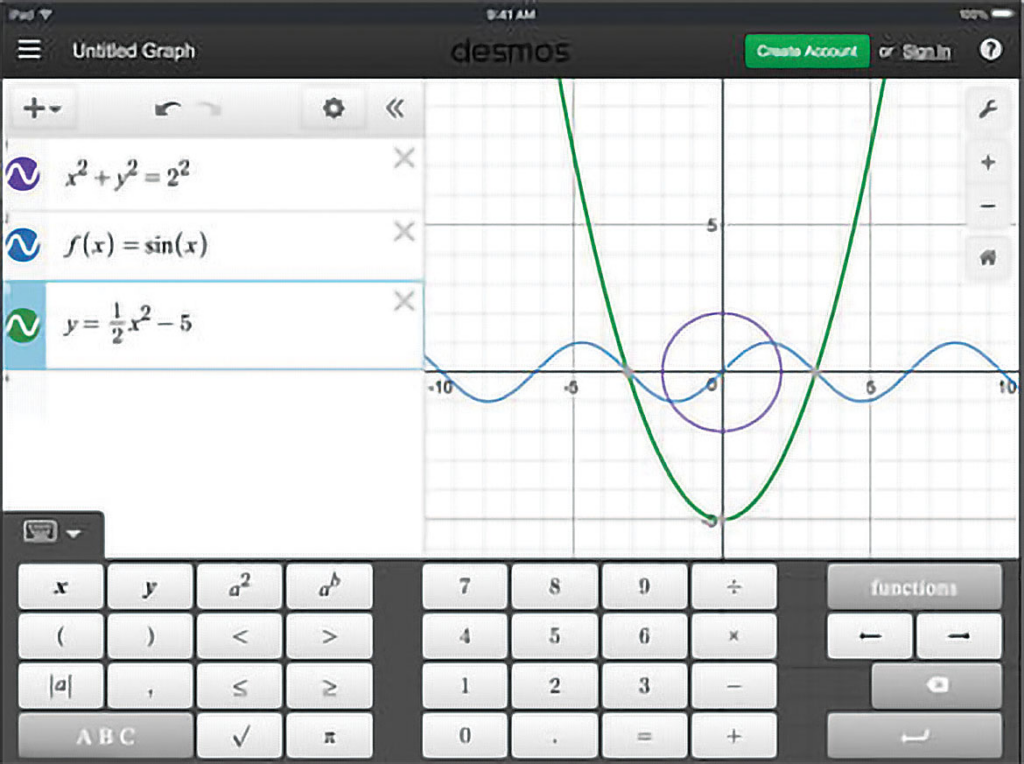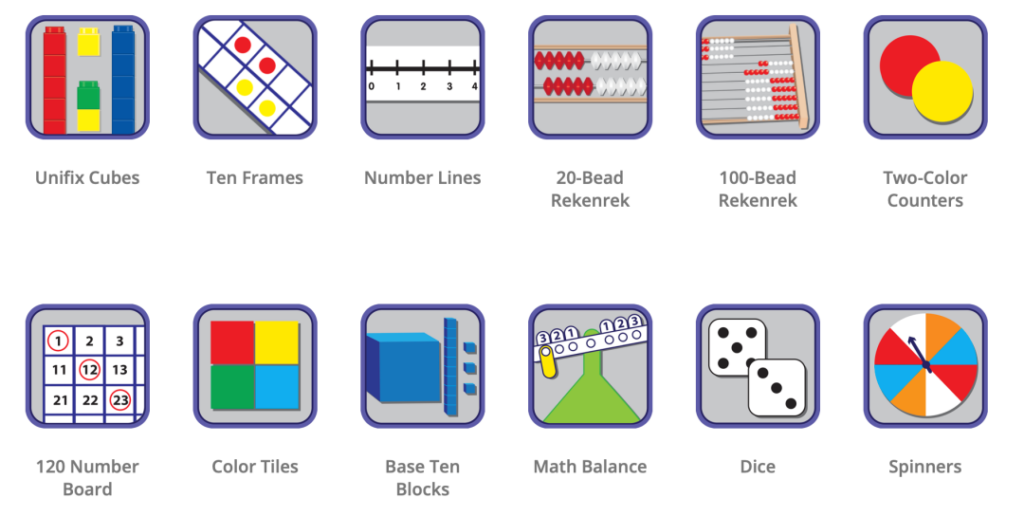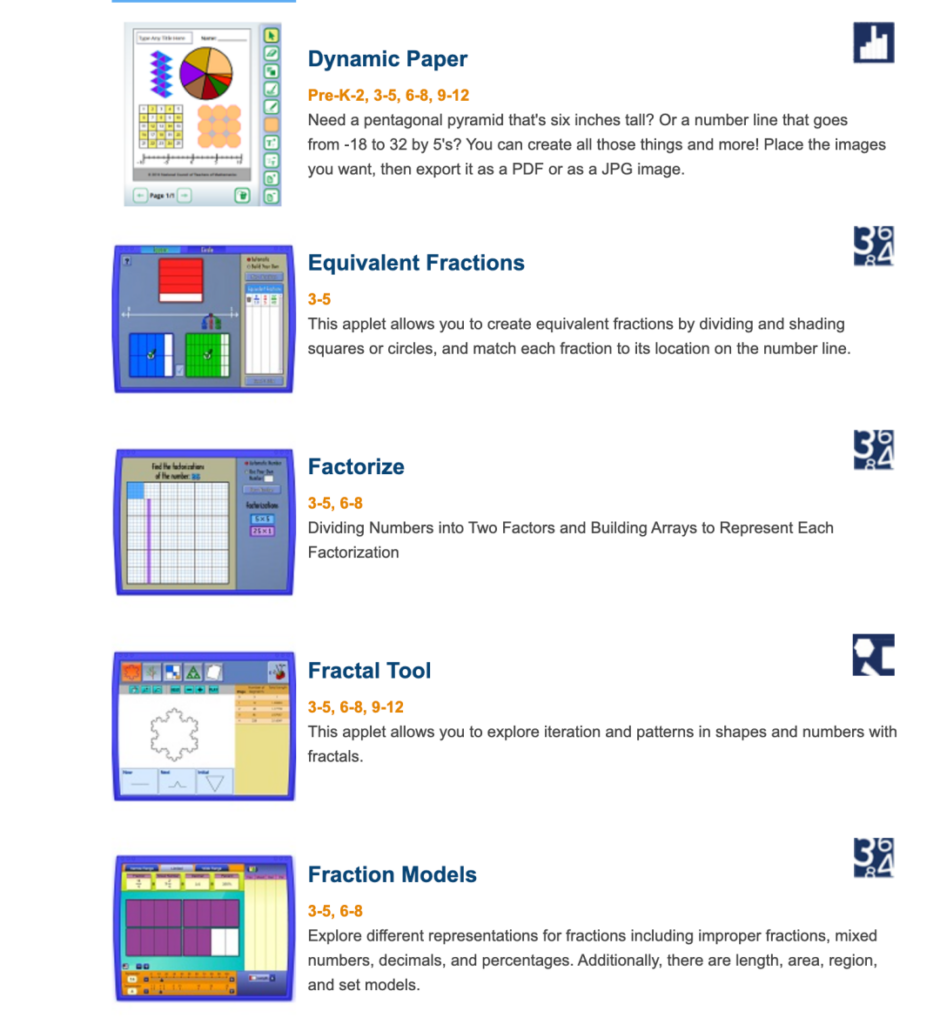Math can be a challenging subject for many students. Being able to recognize, compare, and manipulate numbers, as well as having a deep understanding of how numbers relate to one another is overwhelming. One way to help students grasp these concepts is through the use of manipulatives. These hands-on tools allow students to visualize mathematical concepts and solve problems in concrete and tangible ways. Explore through these free online resources to see if any are a good fit for your classroom!
PHET Interactive Simulations (Grades K-12)
PHET Interactive Simulations offers versatile teaching tools that can be used for exploration, virtual labs, demonstration, assessment, and differentiation. A frequently used simulation is the Equality Explorer. It provides a balance model that spans helping students compare simple numbers in the early grades to understanding complex variable equations in the upper grades. All simulations within the source include teaching resources, activities to implement based on grade level, and a translator for over 60 languages!

Desmos (Grades 3-12)
Desmos is best known for its interactive graphing calculator. Students can plot points, graph functions, and analyze data. After creating a free account, teachers are able to select from an activity bank of lessons or create their own lesson. Teachers have the ability to write on each student’s screen, as they work, to provide immediate feedback! This feature certainly increases engagement. Desmos also offers a year-long curriculum for Grades 6, 7, 8, and Algebra 1.

Didax (Grades PreK-8)
Didax specializes in basic virtual manipulatives to help visually solidify mathematical concepts. The counters and numbers line are great for early learners and the algebra tiles work nicely for intermediate grades. The unifix cubes are easy to move around the screen to create place value representations. This resource offers a wide variety of manipulatives to assist in teaching number sense, place value, probability and geometry.

NCTM Illuminations (PreK-12)
NCTM Illuminations is an excellent resource for educators seeking comprehensive, standards-based materials. This platform offers a range of engaging resources such as games, brain teasers, interactive activities, virtual manipulatives, and lesson plans. To maximize the benefits of this tool, educators can either select their grade level or enter the specific concept they are teaching, which then leads to a curated list of activities tailored to teaching needs.

National Library of Virtual Manipulatives (Grades PreK-12)
The National Library of Virtual Manipulatives is an incredibly user-friendly tool for educators. Its resources are conveniently organized by standard and grade level, allowing teachers to quickly find the manipulatives that best suit their students’ needs. Before using each manipulative, the website provides clear instructions for both the teacher and the student, making it simple and easy to navigate. Furthermore, the library is available in multiple languages, including English, French, Spanish, and Japanese, thereby ensuring accessibility to diverse learners.

Toy Theater (Grades PreK-5)
Toy Theater’s manipulatives are an excellent choice for educators looking for bright, engaging, and vibrant resources to enhance their lessons. This comprehensive library of tools is especially helpful for younger students. One of the most popular manipulatives is the interactive clock, which allows students to adjust the hands on the analog clock and simultaneously see the corresponding digital time. Additionally, the money strips provide a visual representation of various coins, making it easier for students to understand the different combinations of coins needed to make up a dollar.

MathsBot (Grades K-12)
MathsBot provides educators with a variety of tools to enhance their math lessons. One particularly useful tool is the rekenrek, which allows teachers to guide students in adjusting the number of rows used. If you are exploring place value, the resource has cards, dice, and counters for students to view making numbers in different ways. Moreover, this website offers a range of additional mathematical resources such as online worksheets, question generators, printables, reference sheets and starter drills. This is a great “one-stop-shop” tool!

Mathigon (Grades K-12)
Mathigon’s Polypad is a valuable resource for geometry lessons. Many educators recommend using its 3D Solids feature to unfold shapes when teaching surface area. When using this aspect, students can see the shape in its 2D form and apply the writing feature to note the measurements of each side as they work to calculate the surface area of a cube, pyramid, or prism. Additionally, Polypad offers a range of other standards, such as algebra, number sense, and data/statistics. The fraction tiles are another popular feature, as students can easily manipulate the tiles to explore different variations of representing a whole.

The Math Learning Center (Grades K-5)
This website offers a curated list of apps that are based on the visual models featured in the Bridges in Mathematics curriculum. These apps are available in multiple versions, including a web app that is compatible with all modern browsers, a Chrome extension and Apple iOS. One notable feature of this platform is its math vocabulary cards, which provide students with a written and visual description of the word.

GeoGebra (Grades K-12)
While GeoGebra is primarily recognized for its geometry-related tools, it actually offers resources for a variety of other standards as well. For instance, its hundreds chart comes with a useful feature that allows educators to blackout specific numbers, prompting students to fill them in themselves. Meanwhile, the protractor tool is incredibly easy to use, as students can generate an angle and subsequently measure its degree with the virtual protractor.

Overall, manipulatives can be a valuable tool for math educators. They can help students visualize abstract concepts, develop problem solving skills, build spatial awareness, support diverse learning styles, and foster communication and collaboration. By incorporating manipulatives into math instruction, teachers can provide a more engaging and effective learning experience for their students.






